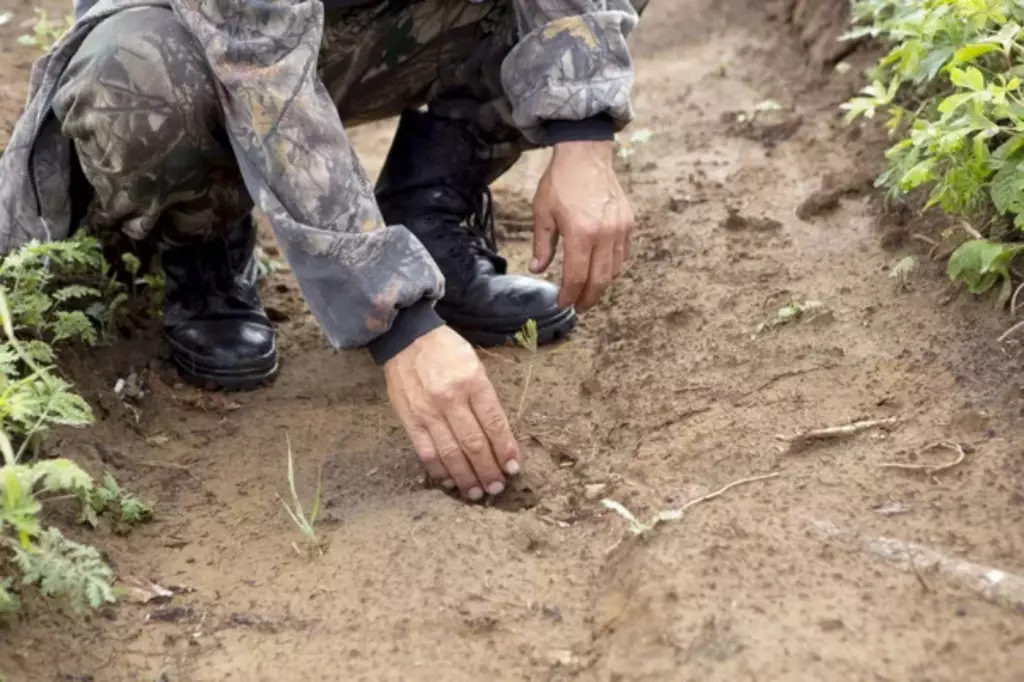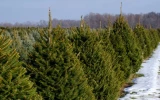Christmas Tree Farm Requirements: Don't Miss These
When establishing a Christmas tree farm, there are specific requirements that you’ll need to comply with before you venture further into it. From choosing the right location to selecting the perfect tree species, there are several factors that can make or break your success in this industry. In this article, we have put together a list of these requirements in full detail, so you don’t miss out on anything as you start your business.
First, select the right species of tree and purchase the seedling. Then, purchase a large piece of land to plant your trees. Acquire fertilizer and mulch, and provide irrigation and pest control. Hire additional help and consider the legalities and permits of your business, such as taxes, bank accounts, and licenses.
Meet these basic requirements, and you will enhance your farm’s attractiveness and increase its profitability. By the end of this article, you'll have a clear understanding of what it takes to start and run a successful Christmas tree farm.
When starting your own Christmas tree farm from scratch, it's important to be aware of the essential requirements to ensure it's a profitable venture.
Summary
- When starting a Christmas tree farm, you will need to select the right species of tree and purchase their seedling. Then, select a suitable site location and plant your seedlings. When planting and growing, you may hire additional help and purchase equipment to make things easier for you.
- You will also need to provide proper irrigation, apply fertilizer and mulch, and keep out pests and diseases from your Christmas tree farm.
- Register your Christmas tree farm and apply for permits and licenses.

On this page:
Requirements for Starting a Christmas Tree Farm
You can start your Christmas tree farm on the right foundation and set yourself up for a profitable and sustainable venture in the industry if you have the following requirements:
Reqt #1: Choose the right species of Christmas trees
Each species has unique characteristics, growth patterns, and site requirements. Here's a brief guide to help you understand the different species and choose which among them is the best variety for your farm.
-
Douglas fir
The Douglas fir is an attractive choice due to its soft, dark green needles and excellent needle retention. This tree prefers well-drained soils and requires regular watering. -
Fraser fir
Fraser fir has been gaining popularity recently for a good reason. It is notable for its blue-green needles, silvery undersides, and stiff branches, making it perfect for holding ornaments. It prefers cold climates and well-draining soils. -
Leyland cypress
Preferred for its attractive foliage and fast growth, the Leyland Cypress thrives in a variety of soil types but prefers well-drained soil and full sunlight. -
Virginia pine
Adaptable and tolerant of poor soil conditions, the Virginia pine is best suited for warmer climates. Its strong branches and moderately dense needles provide a beautiful backdrop for ornaments. -
Balsam fir
With its dark green needles, wonderful aroma, and traditional conical shape, the Balsam Fir is a classic choice. It prefers cool climates and well-drained, moist soils.

-
Noble fir
The Noble Fir is known for its thick, blue-green needles and strong branches. It prefers moist, well-draining soils and moderate temperatures. -
Grand fir
Recognized for its dark green, glossy needles and strong citrus fragrance, the Grand Fir thrives in nutrient-rich, well-drained soils. -
Eastern white pine
These species are well-loved for their long, soft needles and dense foliage. They are a fantastic option, if you suffer from allergies, as no allergy cases have been noted yet for these species even though they belong to the pollen-producing family of pine trees. It thrives in a variety of soils but prefers well-drained, loamy soil. -
Colorado blue spruce
The Colorado Blue Spruce is a striking tree with its unique blue-silver needles and symmetrical form. It prefers deep, moist soil and full sun exposure. -
Arizona cypress
The Arizona cypress is a versatile option with its smooth, soft-textured foliage. It tolerates a wide range of soil conditions and prefers full sunlight. -
Red cedar
The red cedar's appealing aromatic smell and red-brown bark make it an ideal option. Its adaptability to various soil types and weather conditions adds to its appeal.

Reqt #2: Select the right location for your Christmas tree farm
When you have chosen the tree species that you’ll want to grow for your Christmas tree farm, you may now look for land with ideal soil properties. Christmas tree species typically thrive in sandy, loam soils that are moderately to well-drained.
You may want to avoid locations with soils that are either excessively dry or wet, as they are unsuitable for optimal growth. Consider planting your trees on old pastures or recently abandoned agricultural land, as these spots are generally ideal for establishing a plantation.
Remember that the specific soil requirements may vary depending on the tree species you choose, so the best thing you can do first is research your chosen species' needs to ensure their healthy growth.
To maximize the sustainability and productivity of your Christmas tree farm, consider implementing the following practices:
-
Consider the spacing of trees:Perhaps aim to plant roughly 1,500 trees per acre since this is the optimal density. If you have a smaller plot of land, adjust the tree count accordingly.
-
Have knowledge about proper land preparation: Depending on your farm size, you might need machinery or simply hand tools for land preparation. You could choose the most efficient method based on your needs.
-
Plan out the best harvesting strategy: Trees grow at different rates, so plan your harvesting accordingly. Most growers prefer to cut and market an entire crop in one year, to lower the cost of harvesting and clear the area for replanting.
Reqt #3: Supply the basic needs for planting Christmas trees

Choosing and planting the suitable tree seedlings
When starting your Christmas tree farm, you may want to choose the right tree seedlings for optimal growth. In choosing and planting, you could take note of the following:
- Select a suitable tree species for your region.
- Plant seedlings "in-line" in either straight rows or in rows on the contour, as recommended by most growers to avoid having “off-set trees”.
- Space seedlings uniformly to avoid damage by machinery used for cultural practices, especially mowing.
Hiring additional help and purchasing equipment
You may need to invest in tools and machinery, such as tractors, for planting, pruning, and harvesting trees. Depending on the size of your farm, hiring additional help may be necessary during the planting and harvesting seasons.
Providing proper irrigation
During the early years after planting your seedlings, the best thing you can do for them to grow healthily is to provide sufficient watering. You could do the following for more optimal growth:
- Monitor soil moisture levels frequently to avoid over- or under-watering.
- Adjust your irrigation system as necessary to provide adequate water to all trees.
- Keep in mind that different tree species may have varying water requirements; adjust your irrigation system accordingly.
Supplement tree growth with fertilizers
Fertilizers ensure healthy growth and maximize your trees' appearance. To make the best use of fertilizers, try to follow these recommendations:
- Soil-test the plantation to determine the nutrient needs of your trees.
- Apply fertilizers based on soil test results and tree species requirements.
- Time your fertilizer applications to coincide with the trees' growth spurts.
You may need to be aware of local regulations regarding fertilizer usage and follow best management practices to prevent nutrient runoff and protect water quality.
Implement the best pest and disease control measures
Keeping your Christmas tree farm healthy and thriving requires proper pest and disease control. In this section, we'll cover essential practices for managing insects and preventing diseases in your evergreens.
Implementing an Integrated Pest Management (IPM) strategy is a great way to control the insect pests that can damage your trees. Here's how you can get started:
-
Scouting: Regularly inspect your trees for signs of insect infestations. Being vigilant helps you identify potential issues early and take necessary actions.
-
Identification: Learn to identify common insects that infest Christmas trees. This knowledge will help you make informed decisions about the most effective control methods.
-
Threshold: Determine the level of infestation that warrants action. Not every pest sighting requires intervention; know when it's necessary to act.
-
Control: Use a mix of biological, chemical, and cultural methods to control insect pests. Always opt for the least toxic and most environmentally friendly solutions.
In terms of disease control, here are some tips to help you prevent disease spread among your evergreens:
- Choose resistant varieties: When selecting tree species to grow on your farm, you may want to opt for those with natural resistance to common diseases. This will lessen the chances of disease outbreaks and reduce the need for chemical treatments.
For example, with Scotch pine trees, a decline in demand for these Christmas trees has been observed because of their increased susceptibility to insects and diseases.
-
Promote air circulation: Properly spacing your trees will increase air circulation and decrease the likelihood of disease-causing fungi and bacteria thriving in your plantation.
-
Practice proper sanitation: Regularly remove dead or diseased trees and branches from your farm. This practice reduces the spread of pathogens among healthy trees.
By learning about the various licensing and regulatory requirements for starting a Christmas tree farm in your state or region, you can better determine if the average size of operations in your area aligns with what you will need to meet all applicable standards.
Reqt #4: Comply with the legal requirements for a tree farm

To make your business legal, you must consider establishing it as a legal entity, register for taxes, and obtain the necessary licenses and permits. Here are some key points to consider:
Register your business as a legal entity
Now is the time to decide whether your business will operate as a sole proprietorship, partnership, limited liability company, or corporation. Each type of entity has its own advantages and disadvantages, so choose what best suits your needs and preferences.
Apply for tax registration
Register your Christmas tree farm for taxes, which may include sales tax and property tax, depending on your location. Find out more about the tax benefits of owning a tree farm in this article.
Open a business bank account
Opening a business bank account and setting up accounting systems will help keep your finances organized and make tax reporting easier.
Apply for licenses and permits
Research and obtain any required local, state, or federal licenses and permits for operating a Christmas tree farm. This may include permits related to land use, pesticide application, or operating machinery.


